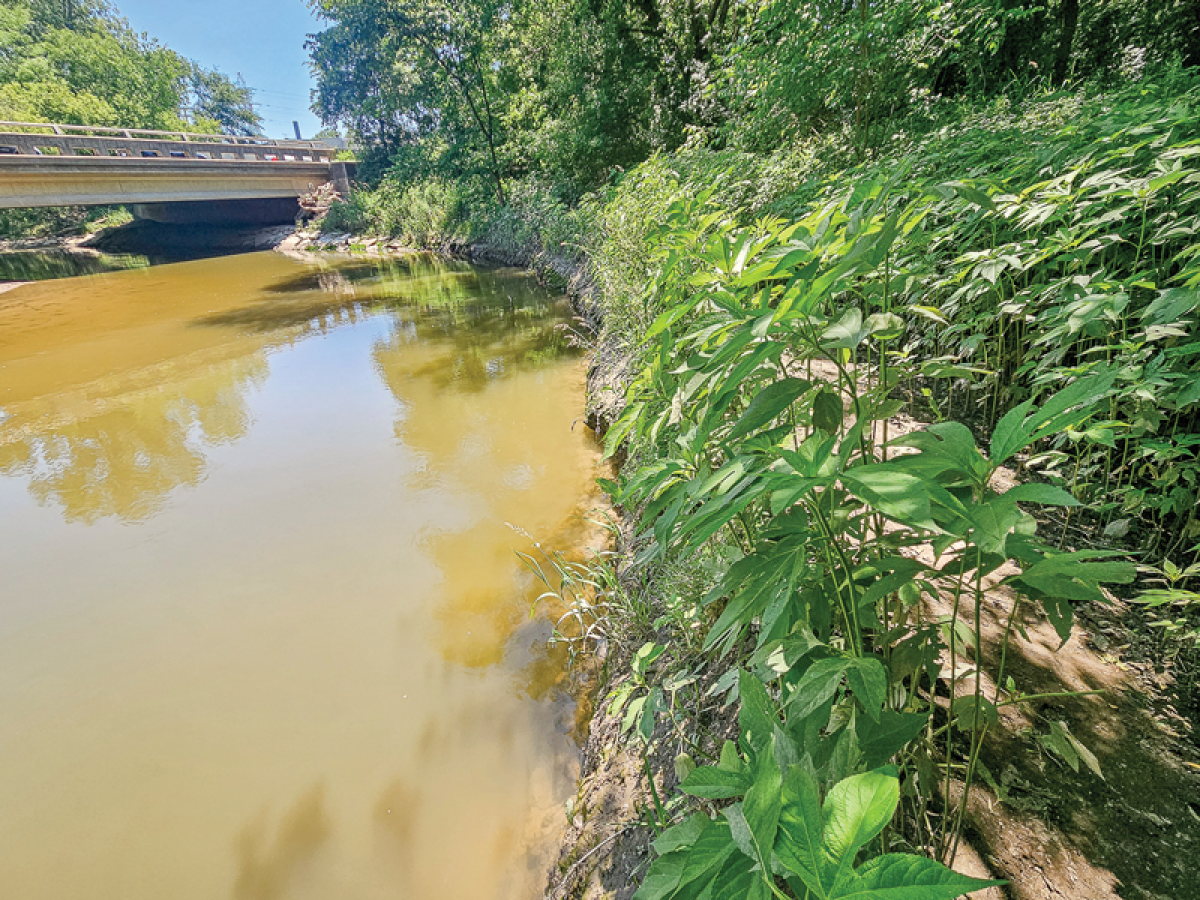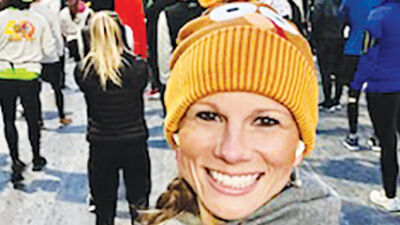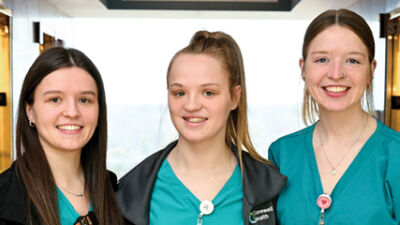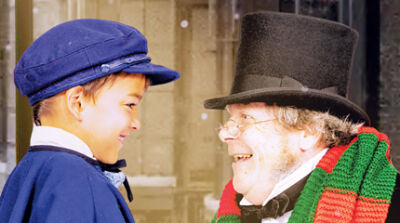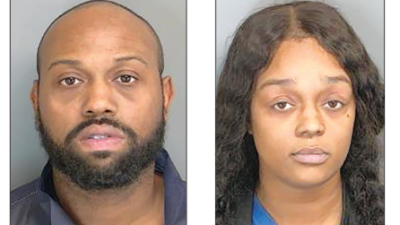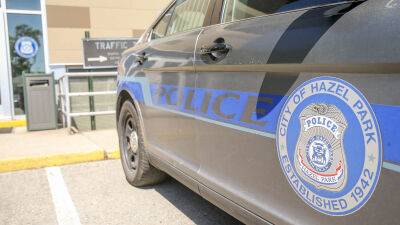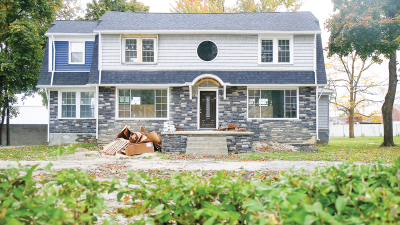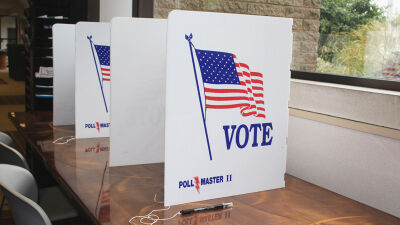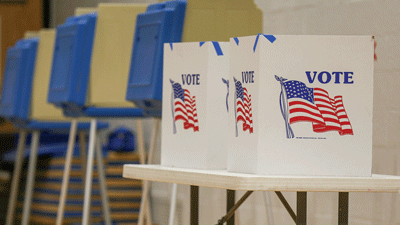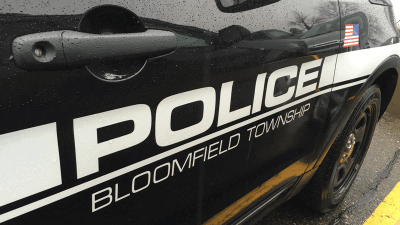
Officials say pathways, sidewalks and tree reforestation along city streets are other parts of the referendum plan.
Photo by Patricia O’Blenes
STERLING HEIGHTS — Besides the fate of the presidency, Congress, and some state and local offices, another big decision will be on the Nov. 5 ballot in Sterling Heights – whether to approve a 15-year, 0.95-mill tax for recreation, sustainability and more.
Late into the night of its June 4 meeting, the Sterling Heights City Council approved putting the millage referendum on the ballot. The vote was 6-1, with Councilman Henry Yanez voting no.
During the plan’s presentation, some officials compared this millage referendum to the Recreating Recreation referendum that narrowly passed in 2016, which funded the construction of the Dodge Park pavilion and ice rink, the Community Center, the Bocce Barn, a dog park, other park improvements, and more.
The city unveiled its Visioning 2040 mission statement, guiding principles and values at its January strategic planning meeting, and the City Council formally approved the plan in the spring.
The visioning plan calls for “an inclusive, vibrant community that is safe, active, and sustainable,” and its principles call for things like recreational opportunities, green spaces, distinctive areas, and accessible paths and trails.
During the meeting, City Manager Mark Vanderpool said successful cities “are in perpetual motion” and are constantly seeking to raise the bar.
“Now we have to activate it,” Vanderpool said, referring to the visioning plan. “It’s meaningless to develop a plan, approve it and then put it on the shelf.”
Here’s what the millage proposal would do, according to the city.
• Trails and paths: Officials said they would spend millage money on a natural pathway that goes into the Sterling Heights Nature Preserve in the northwest part of the city.
Vanderpool also said the initiative would build more sidewalks and make how they’re funded more equitable, replacing the current special assessment system that can bill property owners hundreds or thousands of dollars at a time.
• Land preservation: Officials say the millage would fund a land bank initiative that could publicly acquire land parcels to preserve as open space to use for sustainable green spaces or for recreational purposes.
• Reforestation: Spending would also go toward reforestation initiatives to plant around 15,000 street trees and increase the city’s tree canopy beyond its 19% coverage estimate. Vanderpool said the “best practice” is 40%, and this proposal would bring the city closer to that.
• Park enhancement: In addition, the plan would further expand and develop Rotary Park, near the corner of Utica and Hayes roads, in the wake of the city recently acquiring nearby land parcels and expecting to acquire the Clinton River Canoe and Kayak property, Parks and Recreation Director Kyle Langlois said.
“Once all of the acquisitions are in place, the collective 23-plus acres of land will become an exceptional blank slate for a transformative park development project for area residents to enjoy,” he said.
City officials say Rotary Park is currently underdeveloped. Langlois said that under the new plan, the hope is to have a canoe and kayak facility that would be “much more structured than the one that is currently there right now.”
Langlois also said the Rotary Park plan would include two soccer fields, a basketball court, a pathway and boardwalk, and a historical exhibit paying tribute to the former Sterling Township’s Belvedere Park. Belvedere was a privately owned venue that opened during the 1920s and had a casino, a dance hall, a swimming area and more before it was taken down in 1941, officials said.
Langlois said the parks plank of the millage initiative would also help fund the construction of a new Red Run Park near Moravian Drive and Schoenherr Road. The park could include, among other things: a dog park; six pickleball courts; a pedestrian bridge over the Red Run Drain that gives access to L.W. Baumgartner Park; and a 24-hour, ATM-like satellite branch of the Sterling Heights Public Library with a mix of digital and limited physical materials.
“This amenity will provide residents with many of the library services at a minimal cost compared to constructing a physical library building,” Library Director Tammy Turgeon said.
Lastly, the millage proposal would also establish an indoor paddle sport complex in a yet-to-be-determined location with eight pickleball courts and six table tennis tables.
Making sense of expenses
According to the city, a 0.95-mill tax increase would mean that homeowners would pay an additional 95 cents per $1,000 of their home’s taxable value. So on a home with a taxable value of $100,000, that would be an additional $95 for the year.
The 15-year millage would collect about $92 million over its lifespan, according to Finance and Budget Director Jennifer Varney. She said that, if passed, the millage is expected to raise the city’s millage to 17.53 mills, above New Baltimore and Richmond, but below cities like Utica, Fraser and Warren.
Resident Ken Nelson addressed the millage proposal and the council with, “Are you guys nuts?” He said he is in favor of putting the proposal on the ballot, but he warned the council that “you’re going to have a big fight on your hands,” adding that he’d lead the fight against the tax increase.
“Out of an hour and 15 minutes, I not one time heard the word ‘cut,’” Nelson said. “Every year, we hear, ‘We’re going to spend this money and spend that money.’ … The people are not made out of money that live in Sterling Heights.”
Councilman Michael Radtke supported the proposal and asked residents to “trust us one more time and support this proposal to make Sterling Heights even better.”
Councilwoman Deanna Koski said she really liked some parts of the proposal, but warned of the potential of a “forever tax” due to required maintenance on things like trees beyond the 15 years. She said she supported a referendum, but would campaign for a no vote.
Councilman Henry Yanez listed things that he likes in the millage initiative, such as reforestation and sidewalks, but said the city should’ve done more earlier to set its budgetary spending priorities.
“We should have squeezed every bit that we could have out of the budget, the taxes we already collect,” he said. “So why 0.95? Why not 0.9, 0.85 or 0.75 or 0.65? But we didn’t do that work. We didn’t set our priorities.”
Mayor Michael Taylor described his recent visit to Doha, Qatar, and explained how the public spaces over there were “immaculate.”
“We don’t always expect the best here in the United States. We can do better,” he said. “We can have higher standards for our public areas. We don’t have to be dirty, and we don’t have to have parks that are uninviting.
“We don’t have to have public places that are just a bare minimum. We really don’t, and there’s nowhere more important to do this than at your home, I think, in your community. And to me, what this proposal does is it takes us a step up.”
Learn more about Sterling Heights by visiting sterlingheights.gov and typing “Visioning 2040 Ballot Proposal” in the search bar or by calling (586) 446-2489.
 Publication select ▼
Publication select ▼